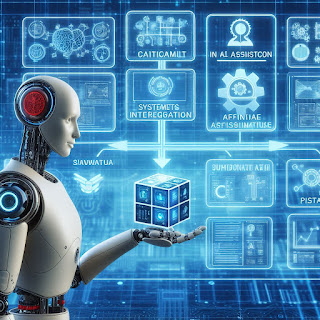Since the early days of my career at WSO2, I've witnessed the evolution of enterprise application integration—from monolithic architectures to today’s agile, cloud-centric environments. Over the years, I’ve learned many valuable lessons about integrating complex systems, which I believe will be crucial as we navigate the future of enterprise technology. Here are some thoughts on where we’re headed, based on both personal experiences and industry trends.
Cloud Integration is Inevitable
The move to the cloud has transformed the way enterprises think about integration. Cloud services offer unparalleled scalability and flexibility, crucial for adapting to market changes. However, the transition is not without challenges. Security, data sovereignty, and multi-cloud management are issues that need continuous attention. Leveraging AI to automate security protocols and manage data across platforms can greatly simplify these tasks, making cloud integration more secure and less daunting.
Domain-Driven Design for Clarity
Domain-driven design (DDD) has taught me the importance of aligning software architecture with business needs. It is especially relevant when dealing with microservices, as each service can be modeled around a specific business domain. This approach minimizes misunderstandings and improves maintainability. AI can play a role here by helping to map domain models and suggest alignments based on business logic extracted from data patterns.
Microservices and the Screen-to-Data Needs
Microservices architecture has become a cornerstone for modern enterprise applications, facilitating the rapid development cycles demanded by today’s business environment. However, managing dozens, sometimes hundreds, of microservices can create overhead, especially when tracing the flow from user screens to data sources. AI can optimize this by automatically detecting inefficiencies and proposing refactoring where necessary.
Addressing Deployment Challenges
Deployment in a microservices environment is inherently complex due to the sheer number of services and their dependencies. Automated CI/CD pipelines, containerization, and orchestration platforms like Kubernetes have been game-changers. Here, AI’s ability to predict deployment failures by analyzing historical data can save significant time and resources, ensuring smoother rollouts and higher stability.
Tackling Production Challenges
Once in production, the real test begins. Monitoring multiple services, ensuring performance and availability, and troubleshooting issues are constant challenges. AI-driven analytics tools can monitor system health in real-time, predict points of failure, and even initiate corrective actions automatically, such as scaling services in response to load changes or rerouting traffic around a failing service.
Leveraging AI for Proactive Integration Management
Perhaps the most exciting prospect is using AI not just reactively, but proactively. AI can analyze ongoing operations and suggest enhancements, detect anomalies before they become problems, and provide insights that lead to more informed decision-making. This level of intelligence is akin to having a seasoned architect overseeing every aspect of the integration landscape, constantly finding ways to optimize and improve.
The future of enterprise integration is not just about adopting new technologies but understanding how to integrate these technologies seamlessly and efficiently into business processes. AI stands out as a pivotal technology in this landscape. It offers the potential to transform challenges into opportunities, driving enterprises towards more adaptive, resilient, and intelligent integration practices.
Just as I have learned from my long tenure and various roles, it’s clear that the ongoing evolution in enterprise integration will require both new solutions and a deep understanding of foundational principles. Embracing AI and other emerging technologies while grounding our approaches in proven methodologies like DDD and microservices will ensure we not only keep pace with change but lead it.

Comments